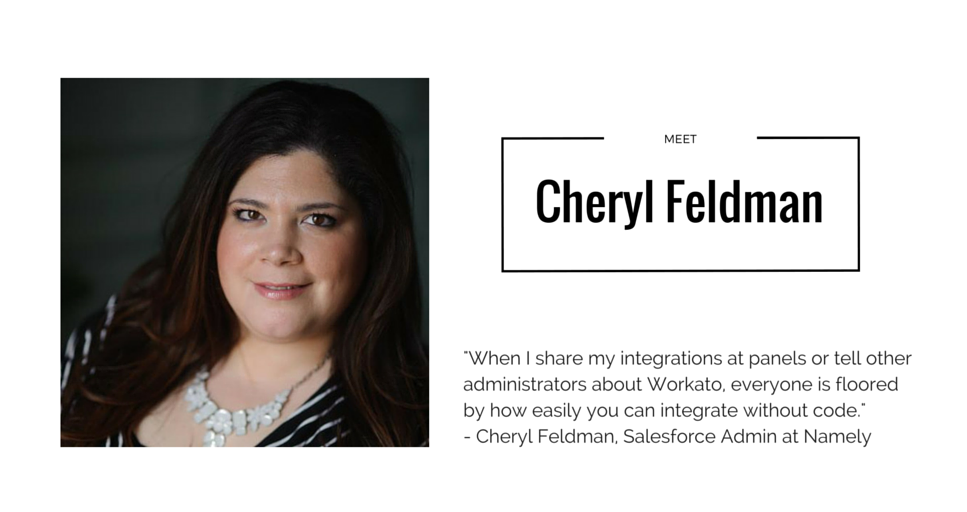As business increasingly moves online, maintaining and improving a product most likely relies on your team of developers who create the front end and back end code for your website, mobile app, or software product. Coders on average spend between 25% and 75% of their time debugging, which is what makes tools that provide bug tracking, issue tracking, and project management functions important to keep things running smoothly. There is no shortage of tools to aid the dev team, from Jira to Trello and Github, but what about connecting the dev team to the rest of the company?
For Namely, the leading HR, payroll, and benefits platform for mid-sized companies, Jira is the hub of all developer activity, while Salesforce CRM (customer relationship management) powers the rest of the team from biz dev to customer service. Cheryl Feldman is the manager of systems administration and Salesforce administrator at Namely. She wanted to bring the engineering team into automatic communication with the rest of the company so that everyone would be aware of new product updates or problems, something especially key for Customer Success. Cheryl knew she could do this by integrating Salesforce and Jira with a two way sync, but she also knew that dev time is a valuable and scarce commodity. So, Cheryl set out to complete this complex integration on her own with no coding knowledge by building her own Workato recipe.

Tell Us About Your Integration Between Jira and Salesforce:
I set up a two way sync between Jira and Salesforce, meaning all information is always up to date in both apps, automatically. When the status of a Jira ticket is updated, it passes right back to Salesforce. That way, everyone in client success is always informed of any enhancements we’re making right in a case in Salesforce. It makes our customer success better without any extra work for them or any distractions for the dev team.
What Happens Without the Integration?
Without the integration, things sit in Slack and email and they’re not tracked – it’s easy for people to lose track of what’s going on. Information is power so our customer success and engineering teams need to stay the loop.
You’re not a Coder, Was It Hard to Create this Integration?
No! Creating a Workato recipe is really similar to creating a workflow rule in Salesforce. If you can do that, then you can create a recipe. I found out about Workato from a webinar. They showed some integrations and I was like ‘wow’. The next day I went to my boss and the engineering team because we were looking at another solution. I said, “There’s this thing called Workato and I think we can use it without any strain on engineering.” For us that is the ideal scenario, so I reached out to Sharon (Workato’s Salesforce Evangelist) and we set it up.
Initially, the functionality to pass comments back and forth from Jira to Salesforce wasn’t there and we told Workato we needed it, and within 4 weeks that option was there and usable, which is pretty amazing as I don’t believe any other solution does that function.
That’s why, as a Salesforce Admin and manager, I believe Workato is life changing for admins! In Salesforce process builder admins can do automation without code in the platform. Workato is the extension of this mentality for integration. When I share my integrations at panels or tell other administrators about Workato, everyone is floored by how easily you can integrate without code.
How Quickly did you see results with Workato?
I had the basic integration up and running in 1 day and with total enhancements it took maybe a week. I built the Jira/Salesforce integration myself and I can’t code at all, so it’s really amazing to me.
Additionally, because Namely is a growing company, we need software that allows us to grow with it. With Workato I can easily enhance the integration at any time – it allows us to work really fast.
What are the Big Benefits of Workato’s Integration?
Not only does Workato provide a functionality I couldn’t find elsewhere (automatically passing comments back and forth between Jira and Salesforce), but it’s also so easy to change and customize when you need it to. When I worked in large enterprise before Namely I saw custom integrations get built out and these solutions are very costly and slow. It would have taken 6 weeks to build a custom integration that did the exact same thing that I accomplished with Workato in a week with no coding knowledge.

